Aloe vera is more than just a remedy for sunburns. This amazing plant has many benefits, making it a great addition to your home or garden. But the question is How to Plant Aloe Vera at home? Growing an aloe vera plant at home is easy and rewarding. This plant offers many benefits.
Benefits of Aloe Vera Plants
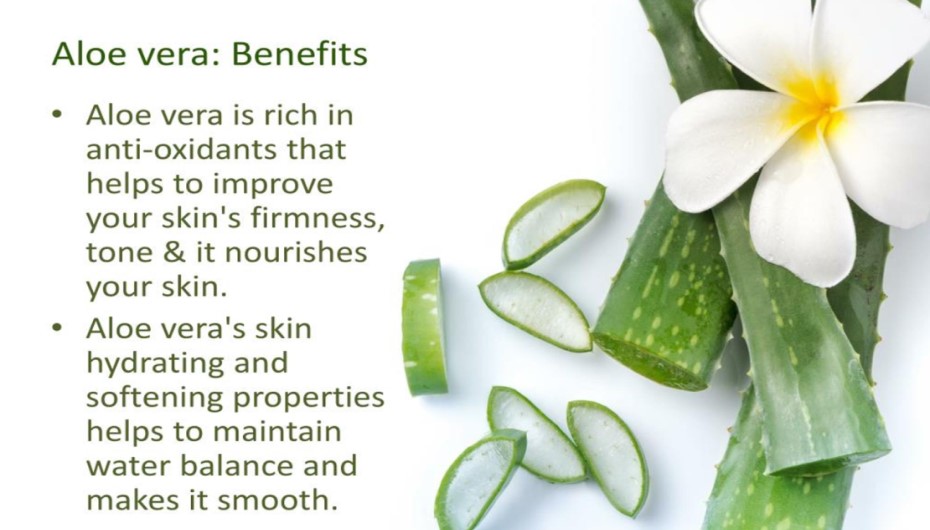
The aloe vera plant produces a soothing gel with medicinal properties, perfect for skin care and minor wounds. It purifies the air, helps heal burns, acne, cuts, scrapes, stings, and wounds, and reduces facial inflammation. Its juice helps detox the body. These plants are low-maintenance and thrive indoors or outdoors in warmer climates.
How to Plant Aloe Vera At Home?
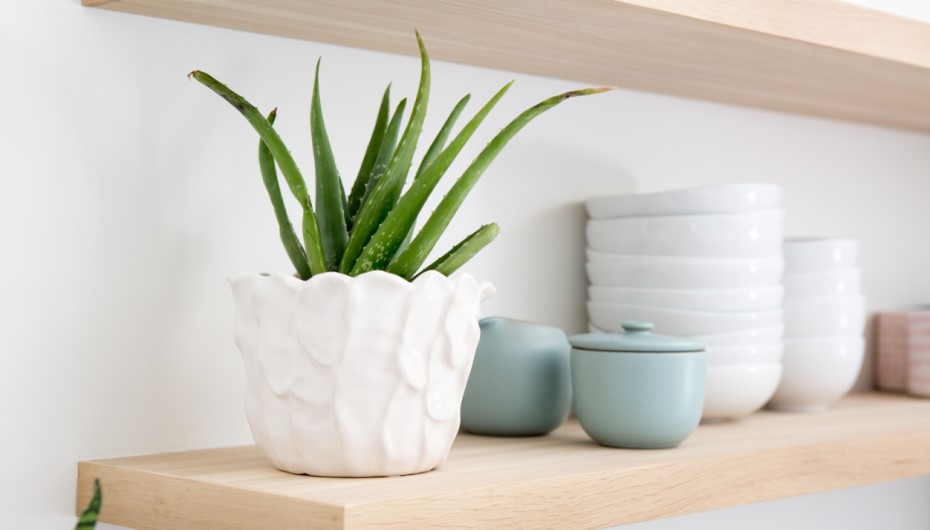
Planting an aloe vera is very easy. You can easily grow aloe vera plants in your garden at home. Let’s start this guide on how to plant aloe vera. We’ll also discuss its harvesting and repotting with simple care.
1. Soil Selection
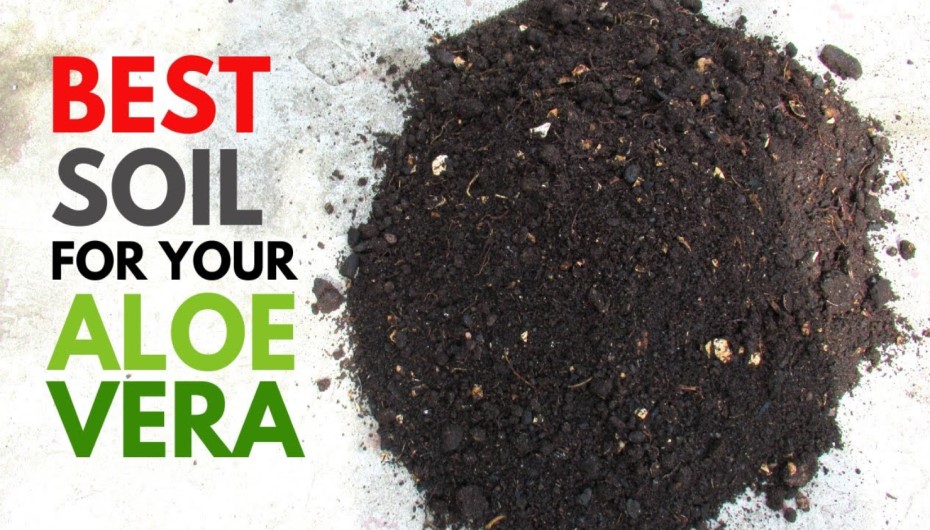
You can plant aloe vera in full sun or partial shade where direct sunlight stays for at least 3 hours. You can also grow them in bright, filtered light indoors. You’ll have to use well-drained soil with good air circulation for aloe Vera to thrive.
You can either make your own by combining 20% perlite, 30% sand, and 50% potting soil. You can also buy cactus or succulent soil from a nearby nursery or gardening store.
2. Pot Selection
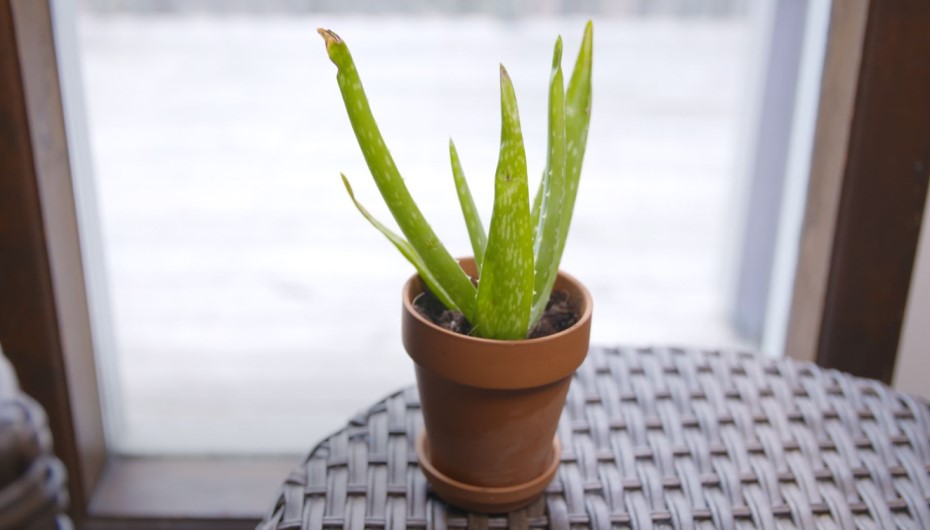
The right pot selection is very important because you need to prevent water buildup so choose pots with drainage holes. Also check if the pot size is large enough for root growth, with some extra space. You can also choose terracotta or ceramic pots for better airflow.
3. Planting and Positing The Aloe Vera
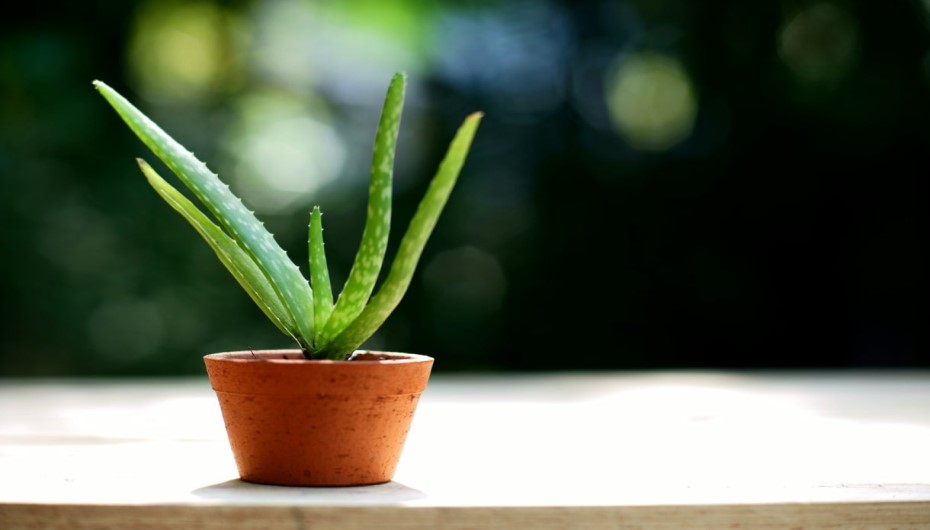
Now, it is time to plant your Aloe Vera. Softly handle the baby aloe vera to avoid damage and place it into the center of the new pot. Now, while maintaining the original planting depth, fill around the roots with your selected soil mixture. After covering the roots with soil, gently press the soil to secure the plant.
Aloe Vera needs lighting, so prefer a bright area or where indirect sunlight reaches. You can also choose shady areas with temperatures between 13°C to 27°C.
4. Required Water For Aloe Vera Plant
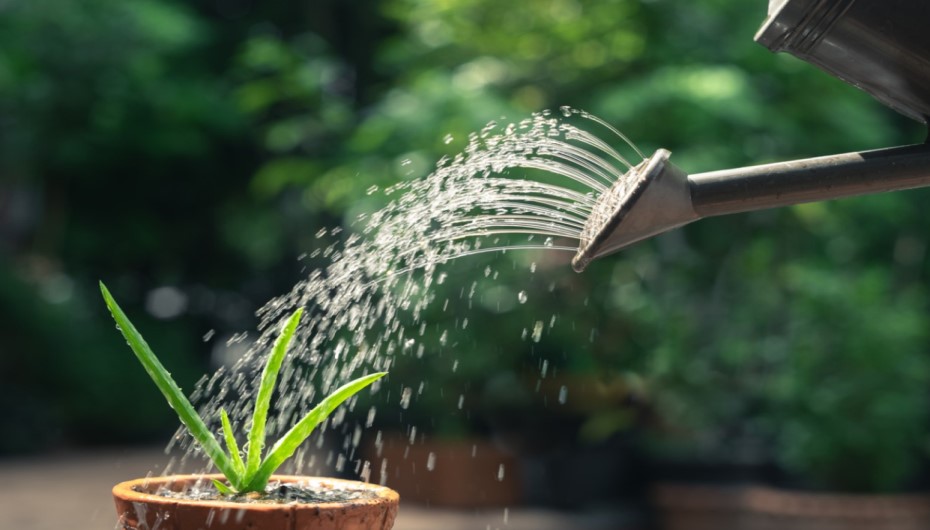
Aloe vera doesn’t need much water. Remember that, overwatering can damage the plant roots. So, always wait for the top soil layer to dry out before watering the plant. In winter, aloe vera needs water after a minimum of 15 days. In Summer, wait until the soil is completely dry before watering the plant 2 to 3 times a week.
Growth & Fertilization Tips
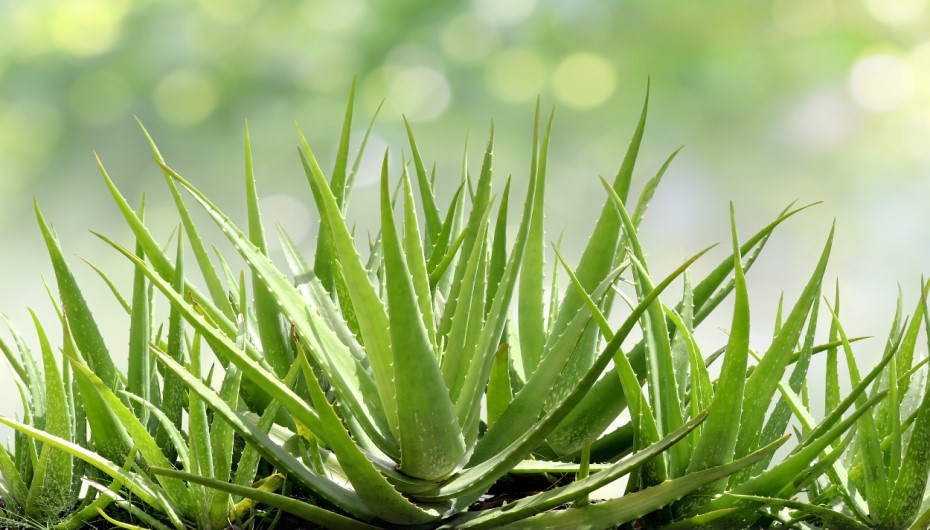
Aloe vera plants gradually produce their baby plants called pups. You can use these pups to grow more aloe vera plants. Once these pups reach one-fifth the size of the parent plant, they can be gently separated and grown independently by using the above method.
A balanced, water-soluble succulent fertilizer is used to feed aloe vera plants as they don’t require much feed. You may choose phosphorus-rich fertilizers too. Only feed the plants once a month. You can also choose organic options for healthy growth.
A healthy aloe vera contains strong and straight leaves with no unusual colors and its edges lie flat. To maintain healthy growth, keep checking your aloe vera’s leaves for signs of pests or disease. If you find any issues, treat them either by using a bug-killing spray or soap or by wiping them with water and neem oil mixture.
Popular Species of Aloe Vera To Choose?
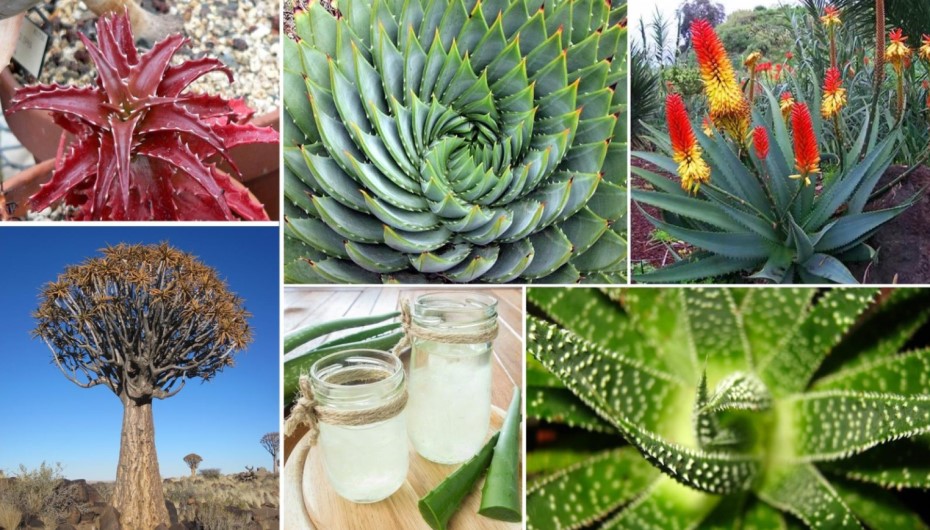
There are almost 650-plus species of aloe vera plants out there. All these species fall into three types i.e. stemless, shrub, and tree aloe vera. Most aloe plants require similar care.
1. Aloe Vera

This is the most common type of species. It features 30 to 40 cm long thick, green leaves spreading from the center and flower stalks up to 90 cm tall. It normally blooms in the Summer months.
2. White Teeth Aloes
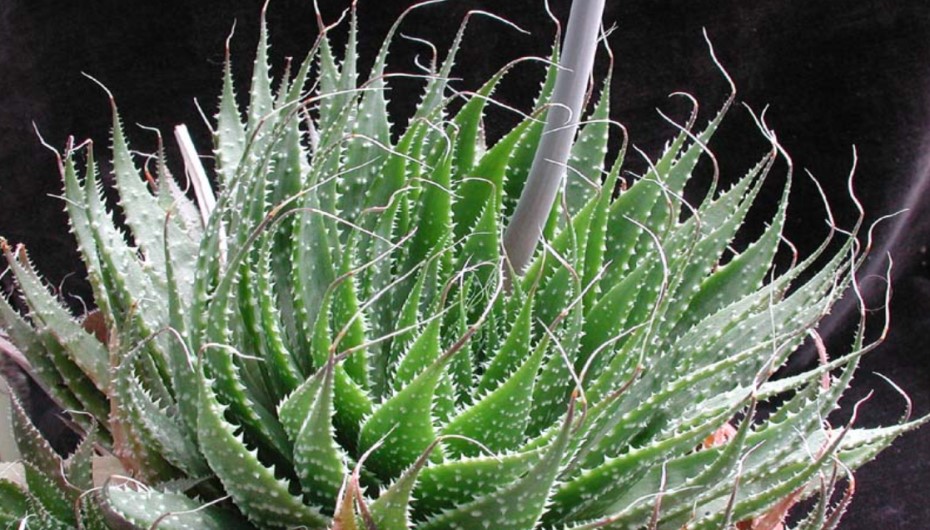
This species is known as Aloe Aristata and is perfect for containers. They can grow 8 to 12 inches tall featuring white-edged leaves. They are poisonous to many animals, especially to the cats. They do not give any health benefits.
3. Spiral Aloe
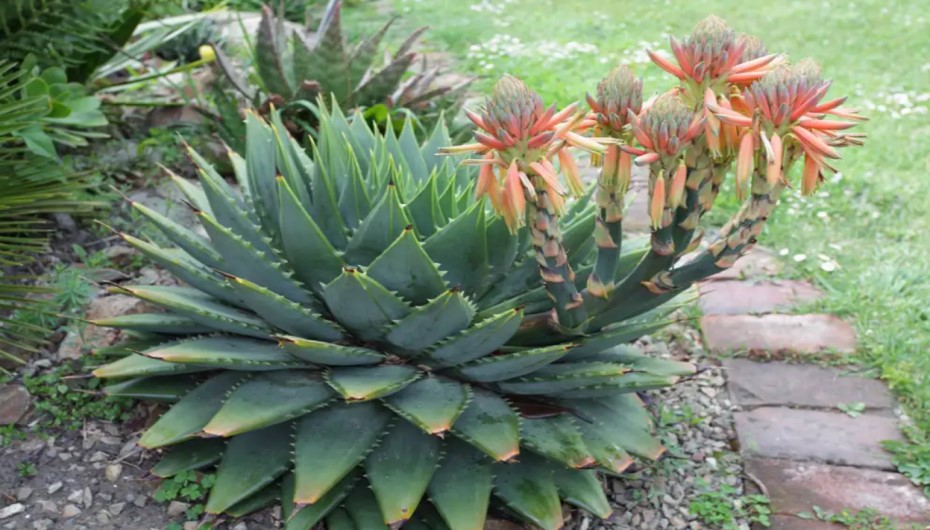
Aloe Polyphylla, also known as the Spiral Aloe due to its name. Its leaves are arranged in a mesmerizing spiral pattern, creating a stunning visual effect. Its salmon-pink flowers emit a sweet, honey-like fragrance.
How To Propagate Aloe Vera Plant?
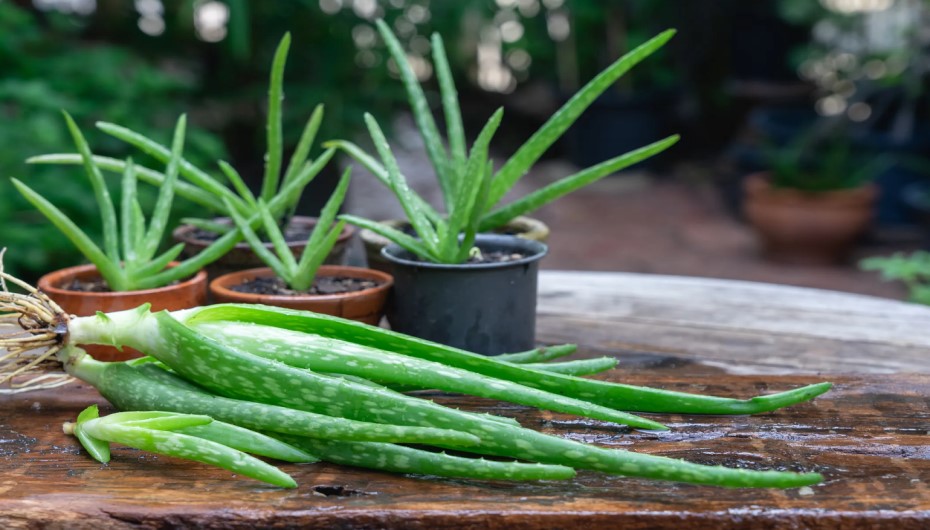
Aloe vera produces baby plants known as pups. You can remove and re-pot them to multiply your aloes, but it’s a bit tricky. Let’s discuss it in more detail.
- Let the pup grow about one-fifth the size of the parent plant. Then, remove the dirt from its base and cut it off with a clean, sharp knife. If the pup has a taproot, remove it with the leaf.
- Now, fill a container with cactus soil, plant the pup in a pot with potting mix, and let it sit for a week before watering.
- After that, care for it like a regular aloe vera plant.
Remember that if pups lack roots, be patient they’ll develop in time. Also avoid planting too deep or overwatering, even for young plants.
How To Harvest Aloe Vera Plant?
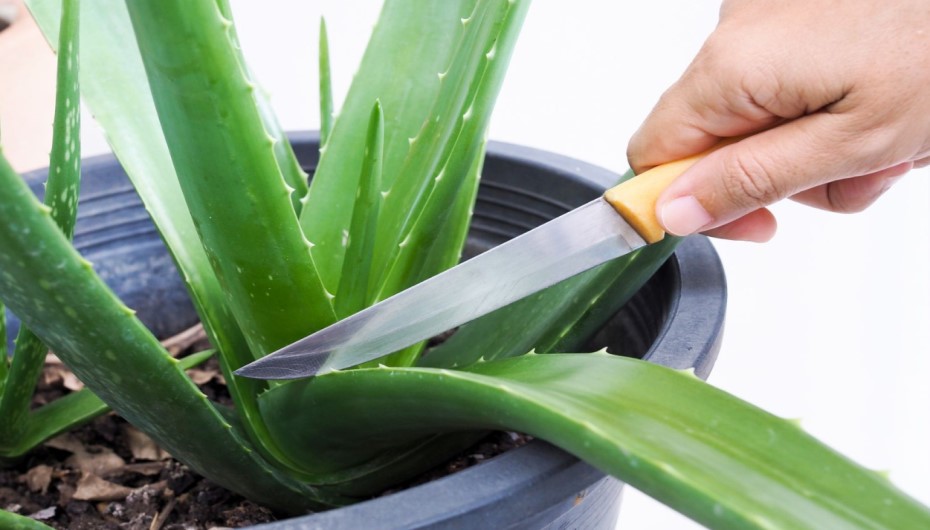
The soothing gel inside Alow leaves has many benefits. To use it, simply choose a larger, older leaf, cut it off at the base, and squeeze out the gel. Rub the gel on sunburns or sore spots. You can also use it as a makeup remover, a hair conditioner, or brow gel. To get more gel, slice the leaf lengthwise and scoop it out with a spoon.
How To Help Aloe Vera Plant?
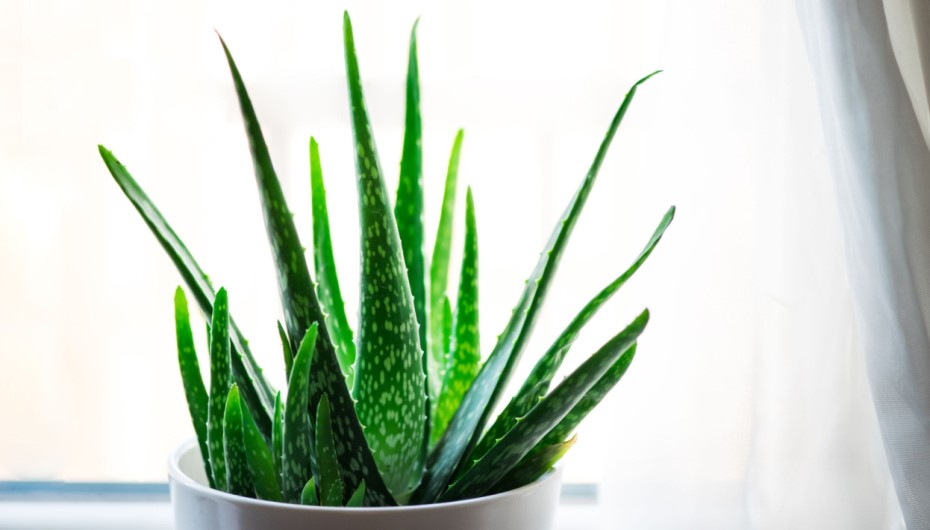
If you notice any signs like yellow or brown leaves, it may be due to overwatering. Simply, don’t water the plant some days. These plants grow well and bloom beautifully, especially in direct sunlight.
If you live in a warm area, try to place it outside in direct sunlight during warm weather. Just introduce it to sunlight gradually to avoid burning. Fertilize lightly in spring to encourage flowering.
How To Repot Aloe Vera Plant?
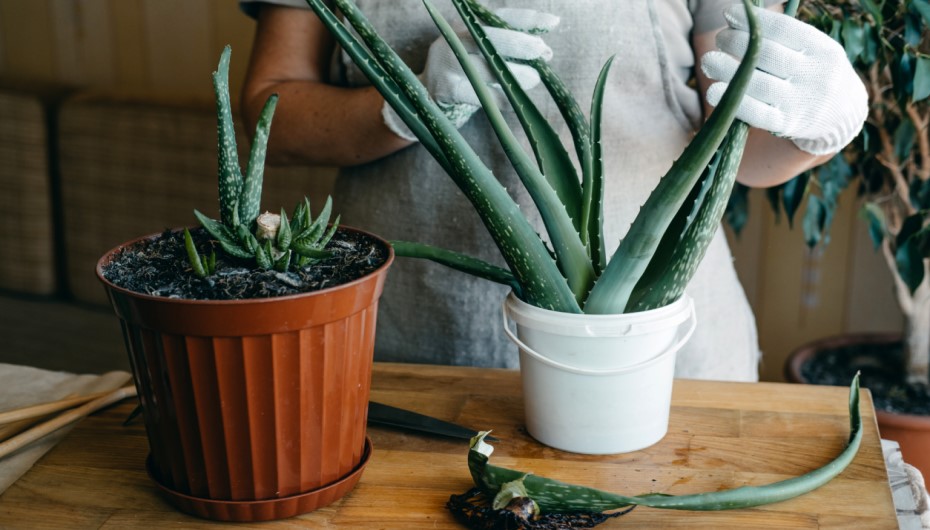
Please note that repotting is only necessary to prevent stunted growth and wilting leaves. Try to avoid frequent repotting. Repotting is mostly done in the spring season when the plant is tipping over and its roots are crowded.
When repotting, choose a heavy, well-draining pot and water it unless the plant looks overwatered. Now gently remove the plant by cutting the roots if needed. Now place it in the new pot leaving the space for roots. Water it immediately.
The Botton Line
Growing Aloe Vera at home is very easy and rewarding. This plant is a low-maintenance plant that offers natural remedies and beautiful greenery. With minimal care, you can enjoy its benefits year-round. We hope that the above guide regarding How to plant aloe vera will be helpful for you. If you need more information, comment down below and the experts of styleofhome.com will be there to assist you.
Frequently Asked Questions (FAQs)
What Is The Best Way To Plant Aloe Vera?
Aloe Vera plants grow rapidly in well-drained soil. Use a well-draining store-bought or homemade potting mix and a pot with drainage holes. Avoid gardening soil to keep your aloe plant happy and thriving.
Can I Grow Aloe Vera From A Cutting?
Yes, you can. The best way to multiply aloe plants is by dividing baby plants also known as aloe pups. However, you can also try stem cuttings or leaf cuttings.
Does Aloe Vera Grow In Sun Or Shade?
Aloe Plants grow well in bright, indirect sunlight. However, try not to keep them in direct sunlight for a long period otherwise, they’ll get burned.
Can We Grow Aloe Vera From Leaf?
Yes, you can grow an aloe plant from its leaf. However, Aloe Vera leaves have high moisture content, making them prone to rotting before rooting. You can try planting aloe using its pups.
Does Aloe Vera Grow Easily?
Aloe Vera grows very easily if you apply only two tips. Just don’t overwater that causes root rot, use well-draining soil, and watch for mealybugs.
